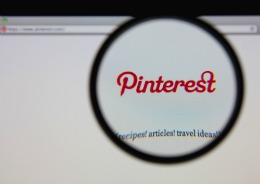
2014-03-17 13:53:27
Using Social Media To Reach Customers, Part 2
2014-03-17 13:53:27
By Abigail Rubinstein
 Abigail Rubinstein LLP. |
Social media is an important tool for businesses to reach their customers, but it is not without risk. It is important to have social media policies in place, which can guide your business when issues arise.
If you missed Part 1 - here’s a few of the best practices for social media, for every type of business. In Part 2, we’ll look at the three most popular social networking platforms - Facebook, Twitter, and Pinterest.
Following are some platform-specific best practices and guidelines for these popular platforms:
 The popular Facebook 'Like' icon. |
Facebook
- Create Facebook guidelines to set out expectations and standards for use on behalf of your company and by employees personally to reduce the risk of irresponsible behavior or disclosure of sensitive information. Information on Facebook is public and reflects on your business. Your business may want to consider only friending or liking other accounts that appropriately relate to your business.
- Understand Facebook’s guidelines and rules. Facebook requires that businesses create brand pages, not personal pages. Facebook requires that a brand cover photo cannot have (1) price or purchase information (e.g., 40% off), (2) a call to action (e.g., “like” “share” “get it now” or “tell your friends”, or (3) contact information such as web, email or mailing address. Facebook also has numerous guidelines regarding promotions and sweepstakes that businesses need to follow.
- Understand what rights, if any, Facebook retains in the intellectual property shared or posted via Facebook.
Twitter

Twitter use is popular among businesses.
- Make sure your business’s Twitter handle (“username”) appropriately identifies your business.
- When retweeting, make sure not to edit or change the original tweet. If necessary to change the original tweet to fit within the character limits, portions at the end of the tweet may be deleted, or consider sending a power tweet through Twylah or Twitlonger.
- When retweeting a link to a website, check the link to ensure it goes to the right place and does not lead somewhere that you do not want your business associated with.
- Never change a tweet to say it came from someone else.
- The Federal Trade Commission requires that readers understand that a celebrity or other person is being paid to endorse your product or service. Every tweet posted on an endorsement basis should include a #Paid or #Sponsored or similar hashtag indicating the paid nature of the tweet.
- Many celebrities use Twitter to reach their audiences. If you are going to Retweet or Reply to a celebrity post it should be clear that the celebrity is not endorsing your products or business.
- Develop a plan for dealing with a hacked Twitter account or a rogue social media manager. If your account ends up tweeting something inappropriate, don’t just delete it and pretend like it never happened.
Pinterest
 Pinterest is among the three most popular social media platforms. |
On the Pinterest website:
- Verify the authenticity before pinning/repinning content. To verify authenticity, look for a link or references to the Pinterest account on other Internet resources known to be authentic, such as the organization’s official website or other social media account.
- Proceed carefully before becoming a contributor to third-party boards. When in doubt regarding whether it is appropriate or advisable to contribute to a third-party board, you should check with your legal counsel.
- Use caution when “liking” or posting comments on third-party boards to ensure you do not appear to be giving an endorsement you may not want to give.
- Always follow Pin Etiquette set forth on Pinterest’s website and treat others’ content respectfully.
Outside the Pinterest website:
- If the site you are pinning from has a “Pin It” button, capture the screen shot and that should be considered sufficient permission. If there is no “Pin It” button make sure to obtain permission for everything you pin.
- Check to see if the site you are pinning from has terms of service (TOS) that allow for certain types of links or postings such as Pinterest pinnings and make sure to follow the TOS.
- Do not copy images from Flickr, Instagram or other online photograph collections and forums unless you have explicit permission from the owner. Do not assume a license for an image means that pinning is permitted, as licenses often have many nuances and specific use requirements.
- Do not pin stock photos without evidence of purchase, even if the site says the photos are free. Generally, the photos are free to be used in only very limited non-commercial circumstances.
- Do not pin images of individuals without explicit permission.
- Content should only be used from reputable, primary sources, rather than secondary sources such as image searches and blog postings. Sources should always be properly credited.
- Respect “no pin” code – do not attempt to find a workaround by searching for content from a secondary source.
Conclusion
Social media is a critical business tool to communicate with customers, suppliers, business partners and employees. The above is only a brief discussion of guidelines for specific platforms. Having social media policies in place is an important step in minimizing legal risk in using social media for your business.
Please visit www.topbeautysh.com for more information
LinkedIn




